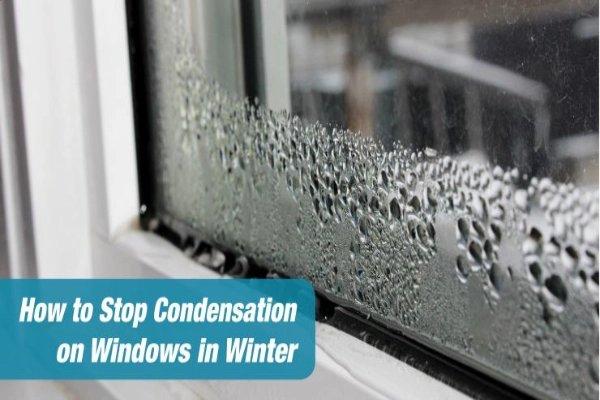
Prevent Condensation On Windows In Winter: Tips & Tricks
Keep your home cozy and humidity in check this winter with effective techniques on How to Prevent Condensation on Windows in Winter. By following simple steps, you can bid farewell to foggy windows and potential moisture damage. First, ensure proper ventilation by using exhaust fans and opening windows when possible. Next, use a dehumidifier to maintain ideal indoor moisture levels. Lastly, consider insulating your windows with weather stripping or storm windows for extra protection. Embrace a condensation-free winter with these practical solutions.
How to Prevent Condensation on Windows in Winter
Winter brings chilly temperatures, cozy blankets, and the beautiful sight of snow-covered landscapes. However, along with the winter charm comes a common nuisance – condensation on windows. Have you ever woken up to find your windows covered in water droplets, obstructing your view and potentially causing issues with mold and mildew? Fear not! In this comprehensive guide, we will explore various strategies to prevent condensation on windows during the winter months. Let’s dive in!
Understanding Condensation on Windows
Before we delve into solutions, it’s essential to understand what causes condensation on windows. Condensation occurs when warm, moist air comes into contact with a cold surface, such as your windows. During the winter, the temperature outside drops, causing the windows to become cold. When the warm indoor air meets the cold glass surface, it loses its ability to hold moisture, leading to the formation of water droplets on the windows.
The Impacts of Condensation
Condensation may seem harmless at first glance, but it can have detrimental effects if left unchecked. The excess moisture on windows can seep into the window frames, leading to mold and mildew growth. Additionally, prolonged condensation can damage window sills, walls, and even furnishings near the windows. By taking proactive measures to prevent condensation, you can safeguard your home and maintain a healthy indoor environment.
Effective Strategies to Prevent Condensation
Now that we’ve covered the basics let’s explore practical tips to keep condensation at bay:
1. Proper Ventilation
One of the most effective ways to reduce condensation is by ensuring adequate ventilation in your home. When cooking, showering, or doing laundry, make it a habit to use exhaust fans to expel humid air outside. Opening windows periodically to let fresh air circulate can also help balance indoor humidity levels, minimizing condensation buildup.
2. Use a Dehumidifier
Investing in a dehumidifier is a worthwhile solution to control indoor humidity levels, especially in areas prone to excess moisture. A dehumidifier works by extracting moisture from the air, helping to prevent condensation on windows and other surfaces. Place the dehumidifier in high-moisture areas like basements or bathrooms for optimal results.
3. Insulate Your Windows
Proper insulation is key to combatting condensation on windows. Insulating your windows with weather stripping or caulking can help create a barrier between the warm indoor air and the cold glass surface. Additionally, consider using insulated window treatments like thermal curtains or window film to minimize heat transfer and reduce condensation.
4. Monitor Indoor Humidity Levels
To prevent condensation, it’s essential to keep an eye on indoor humidity levels. Ideally, indoor humidity should be maintained between 30-50%. You can use a hygrometer to measure humidity levels and adjust accordingly. If humidity levels consistently exceed the recommended range, take proactive steps to reduce moisture sources and improve ventilation.
5. Position Houseplants Wisely
While houseplants add a touch of greenery to your home, they can also contribute to indoor humidity levels. Position plants away from windows during the winter months to prevent excess moisture from accumulating on the glass. Proper plant placement can help maintain balanced humidity levels and minimize condensation.
Additional Tips and Tricks
In addition to the strategies mentioned above, here are some quick tips to help you prevent condensation on windows:
– Use a squeegee to remove water droplets from windows in the morning.
– Keep furniture away from windows to allow for better air circulation.
– Avoid drying clothes indoors, as it can increase humidity levels.
– Install trickle vents or window vents to improve air circulation.
Condensation on windows can be a pesky problem during the winter, but with the right strategies, you can effectively prevent it. By understanding the causes of condensation, implementing proper ventilation, and maintaining optimal humidity levels, you can enjoy clear windows and a comfortable living environment throughout the winter months. Say goodbye to foggy windows and hello to a cozy, condensation-free home!
What Causes Window Condensation and How to Stop It
Frequently Asked Questions
How does condensation form on windows in winter?
Condensation on windows occurs when warm moist air comes into contact with a cold surface, such as glass. During winter, the temperature difference between the inside and outside of a house can lead to condensation forming on windows.
What are some tips to prevent condensation on windows in winter?
To prevent condensation on windows in winter, ensure proper ventilation by using exhaust fans, opening windows periodically, and using a dehumidifier. Additionally, maintaining consistent indoor temperatures can help reduce the likelihood of condensation forming.
Is there a way to improve air circulation to prevent condensation on windows in winter?
Yes, improving air circulation can help reduce condensation on windows. You can achieve this by using ceiling fans in reverse during the winter to circulate warm air near the windows. This can help prevent condensation by keeping the window surfaces closer to room temperature.
Final Thoughts
To prevent condensation on windows in winter, maintain good ventilation by using exhaust fans and opening windows slightly. Keep indoor humidity levels between 30-50% and use a dehumidifier if necessary. Install storm windows or use insulating window film for added protection. Regularly check and repair any leaks or cracks around windows to prevent moisture buildup. Taking these proactive steps can help prevent condensation on windows in winter and maintain a comfortable, moisture-free environment in your home.


